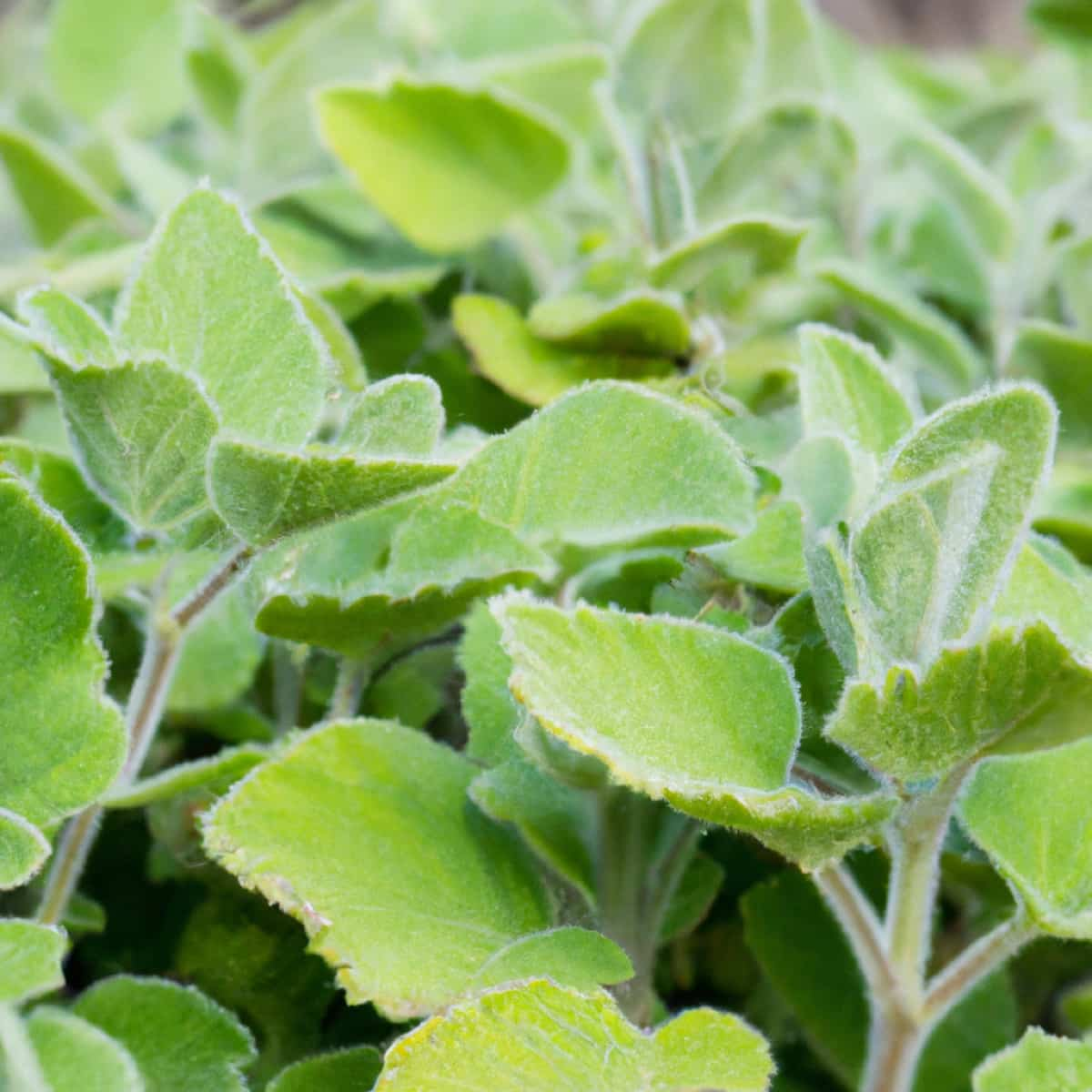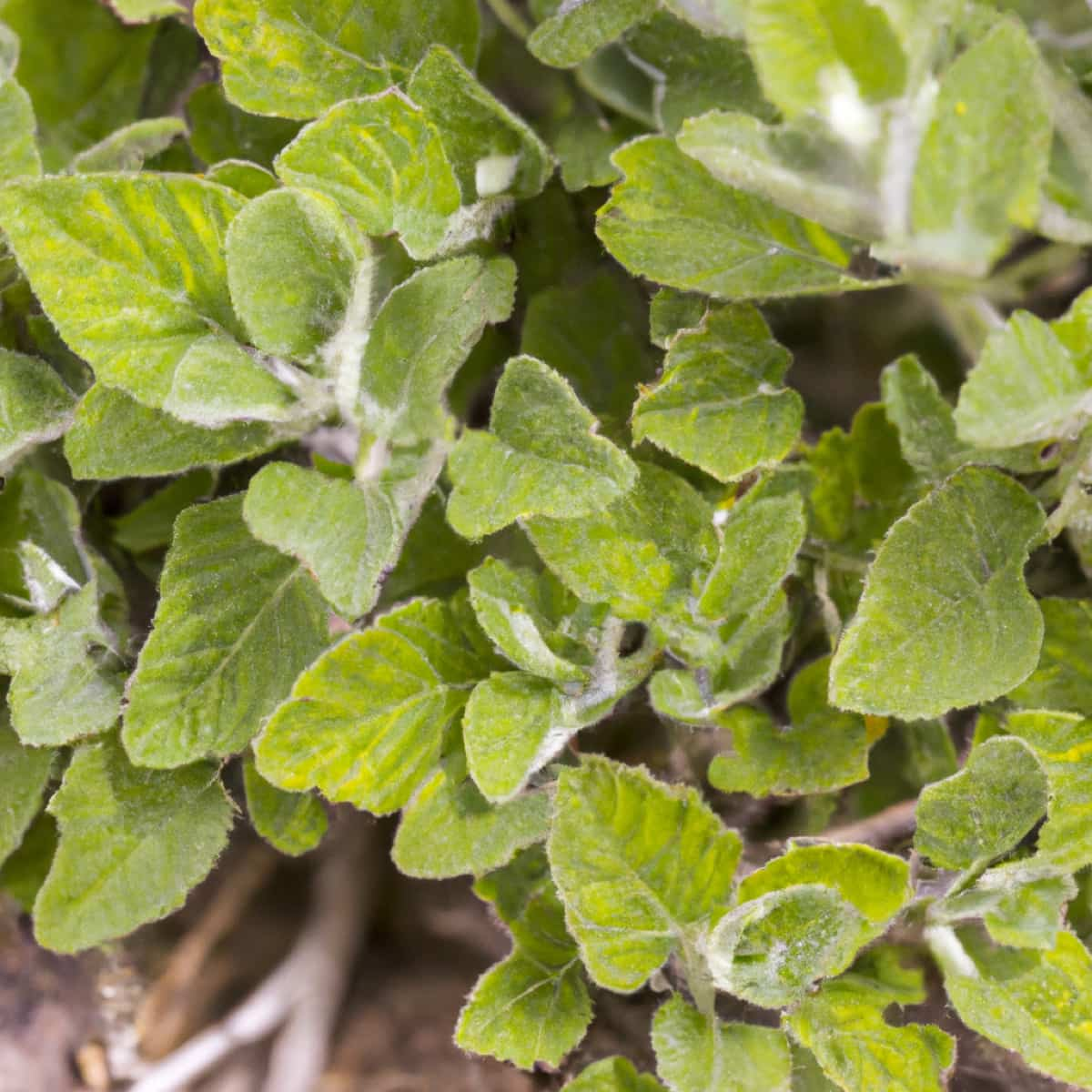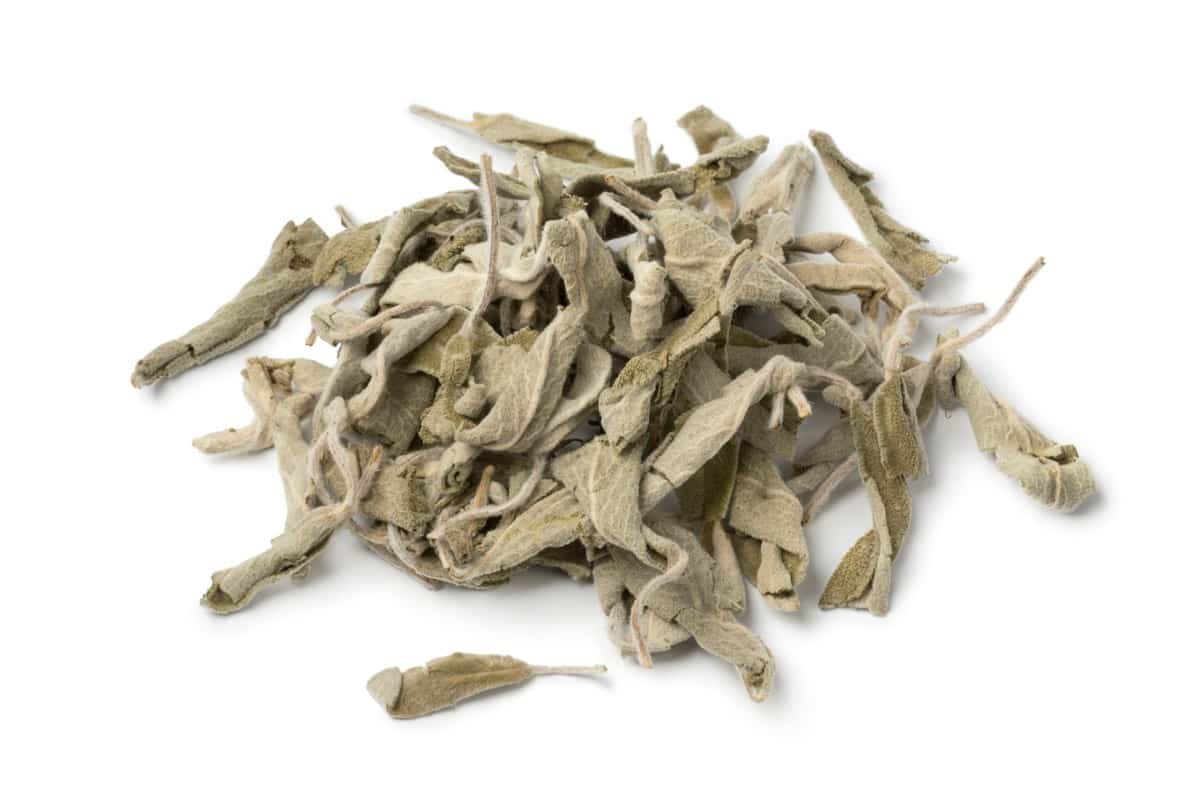Growing Horehound is relatively easy and can be done in containers and outdoor gardens. Once your Horehound plants are established, caring for them is relatively easy. Regular watering, occasional fertilization, and pruning will help maintain their health and vigor. Harvesting the leaves at the right time ensures maximum potency for medicinal use or adds unique flavor profiles to your recipes.

How to Grow and Care for Organic Horehound
Step-by-step Guide on Planting Organic Horehound
When planting organic Horehound, selecting a suitable location that receives full sun or partial shade is important. Ensure the area has well-draining soil and is away from competing plants or weeds. Before planting, prepare the soil by removing any rocks, debris, or weeds. Horehound prefers slightly alkaline soil with a pH range of 6.0 to 8.0.
When growing Horehound from seeds, sow directly into the prepared soil in early spring after the last frost date for your region. Scatter the Horehound seeds evenly on the soil and lightly press them down without covering them completely. Keep the soil moist but not waterlogged during germination and establishment phases.
Once established, the Horehound is relatively drought-tolerant and requires watering only during prolonged dry spells. As seedlings emerge, thin them out to maintain proper spacing between each plant—typically around six inches apart—to allow for optimal growth and airflow. Remember, patience is key when growing organic Horehound, as it can take a few weeks for germination to occur.
Essential Tips for Growing Horehound at Home
First and foremost, choose a sunny place for your Horehound plants. They thrive in full sun and produce more leaves and flowers when exposed to ample sunlight. Next, make sure you provide well-draining soil for your Horehound. This herb prefers soil with good drainage to prevent waterlogged roots. Adding compost or organic matter can improve the soil’s texture and fertility. Regular watering is crucial for the healthy growth of organic Horehound plants. Pruning is another important aspect of caring for Horehound plants.
In case you missed it: How to Grow and Care for Organic Fennel: Planting Instructions

Regularly trim dead or damaged stems to promote new growth and maintain a compact shape. To encourage optimal growth, consider using organic fertilizers. These natural options provide essential nutrients without introducing harmful chemicals into your garden. Watch for pests such as aphids or spider mites, which may occasionally target Horehound plants. Utilize natural pest control methods like neem oil spray or insecticidal soap to protect your herbs without using synthetic pesticides.
Watering Techniques for Healthy Organic Horehound Plants
Proper watering techniques ensure the plants receive adequate moisture without causing waterlogged roots or drought stress. Horehound prefers well-drained soil, so it’s important not to overwater. Water deeply once or twice a week, allowing the top few inches of soil to dry out between waterings. Water in the early morning or late afternoon when temperatures are cooler, as this allows the plants to absorb moisture before it evaporates.
Before watering, check the soil moisture level by inserting your finger into the ground up to an inch deep. If it feels dry at this depth, it’s time to water. Focus on watering around the base of each plant rather than overhead irrigation, as wet foliage can lead to disease issues. Apply organic mulch around your Horehound plants to help retain moisture and reduce weed competition. If growing Horehound in containers, ensure proper drainage holes and avoid letting pots sit in standing water.
Organic Fertilizer Options for Promoting Horehound Growth
By providing essential nutrients and improving soil fertility, these natural fertilizers can help your Horehound thrive. Compost enriches the soil with nutrients and improves its structure and moisture retention capabilities. Another choice is well-rotted manure, which provides a rich source of nitrogen, phosphorus, and potassium – key elements necessary for plant growth.
However, ensure the manure has been properly aged to avoid burning or damaging your Horehound. You may also opt for seaweed-based fertilizers that contain trace minerals beneficial for Horehound’s overall health. These products are derived from seaweed extracts and are typically available in liquid form.
In case you missed it: How to Grow and Care for Organic Fenugreek: Planting Instructions

Furthermore, bone meal is an excellent organic fertilizer option as it contains high levels of phosphorus—a nutrient vital for root development and flowering. Just be cautious when applying bone meal to prevent over-fertilization. Worm castings or vermicompost provide a wealth of micronutrients while enhancing soil structure through their humus content. They also promote beneficial microbial activity within the soil ecosystem.
Natural Pest Control Methods for Organic Horehound Cultivation
One effective method is companion planting. You can repel pests naturally by strategically placing certain plants near your Horehound. For instance, planting garlic or onions nearby can deter aphids and other insects. Another option is using homemade insecticidal sprays. These mixtures often contain ingredients like neem oil, soap, and water. Spray the solution on your Horehound plants to keep bugs at bay.
Regularly inspecting and handpicking pests is crucial in maintaining a healthy Horehound Garden. Look for signs of infestation, such as chewed leaves or distorted growth patterns. Remove any affected foliage promptly to prevent further damage. Creating physical barriers around your Horehound plants is another effective way to ward off pests.
Use netting or row covers to protect them from flying insects or larger animals that may feed on the leaves. Encouraging beneficial insects in your garden can provide natural pest control for your Horehound plants. Ladybugs and lacewings are beneficial bugs that prey on common garden pests like aphids.
Common Mistakes to Avoid When Growing Organic Horehound
Some common mistakes can hinder your plants’ success when growing organic Horehound. Avoiding these pitfalls will help ensure healthy growth and robust harvests. One mistake to avoid is overwatering. While Horehound does require regular watering, excessive moisture can cause other fungal diseases. It’s important to strike a balance and provide just enough water for the plant’s needs.
In case you missed it: How to Grow and Care for Organic Lemon Balm: Planting Instructions

Another mistake is planting the Horehound in the wrong location. This herb thrives in full sun, so choose a spot that receives at least six hours of direct sunlight daily. Planting in shady or partially shaded areas can produce weak plants with poor flavor. Additionally, neglecting proper pruning can hinder the growth of your Horehound plants. Regularly trimming back the stems encourages bushier growth and prevents the plant from becoming leggy or straggly.
Using synthetic fertilizers is another mistake to avoid when growing organic Horehound. Instead, opt for natural compost or organic fertilizers rich in nitrogen, phosphorus, and potassium to nourish your plants without introducing harmful chemicals into your garden.
Failing to address pest issues promptly can harm your Horehound crop. Watch for common pests like aphids or spider mites and take appropriate measures such as using insecticidal soap or practicing companion planting with pest-repellent herbs like basil or marigold.
Optimal Soil Conditions for Planting Organic Horehound
Providing the right soil conditions is crucial for its growth and overall health when planting organic Horehound. Horehound prefers well-draining soil. It does not do well in waterlogged or compacted soils, as this can lead to root rot and other problems. You can amend heavy clay soils with organic matter to achieve good drainage. Horehound thrives in slightly alkaline soil with a pH between 6.5 and 8.0. Add lime to gradually raise the pH if your soil is too acidic (below pH 6).
Additionally, Horehound prefers fertile soil rich in organic matter. Adding compost or well-rotted manure before planting will help enrich the soil and provide essential nutrients for healthy growth. Furthermore, ensuring proper moisture levels in the soil is important for successfully cultivating Horehound plants. While they prefer moderately moist conditions, you should not overwater them as this can cause root diseases like damping off. Optimizing the soil conditions for planting organic Horehound is vital to its successful growth.
Organic Companion Plants That Benefit Horehound Growth
Choosing the right companion plants for your organic Horehound Garden can significantly affect overall health and productivity. By selecting complementary plant species, you can create a thriving ecosystem that promotes natural pest control and enhances the growth of your Horehound plants. One excellent companion plant for Horehound is chamomile. Chamomile adds beauty to your garden with its dainty white flowers and releases beneficial compounds into the soil, which help deter pests like aphids and mites.
Additionally, chamomile’s delicate fragrance attracts pollinators such as bees and butterflies, which are crucial in fertilizing Horehound flowers. Another great companion for Horehound is the yarrow. Yarrow’s strong scent repels harmful insects, attracting predatory ones like ladybugs that prey on aphids. Planting yarrow alongside your Horehound will provide added protection against common garden pests.
Lavender is another fantastic choice as a companion plant for a Horehound. Its aromatic oils act as a natural insect repellent, keeping unwanted pests at bay while attracting beneficial pollinators. The beautiful purple blooms of lavender also add visual appeal to your garden space. Planting mint near your Horehound can have multiple benefits. Due to its strong scent, mint is an effective deterrent against rodents. Furthermore, it attracts beneficial insects like hoverflies that feed on aphids and other sap-sucking pests.
Growing Horehound indoors
Growing Horehound indoors is convenient for those with limited outdoor space or who live in colder climates. Choose a suitable location for your indoor Horehound plants. They thrive in bright sunlight, so place them near a south-facing window where they receive at least 6-8 hours of direct sunlight daily. If natural light is insufficient, consider using artificial grow lights to supplement their needs. Next, ensure proper drainage using well-draining soil mixtures specifically formulated for herbs.
In case you missed it: How to Grow and Care for Organic Dill: Planting Instructions

Regularly check moisture levels to avoid overwatering or letting the roots dry out completely. Maintain moderate humidity levels around your Horehound plants by misting them regularly with water or placing a tray filled with water close by to provide gentle evaporation. Since indoor environments lack natural pollinators like bees and butterflies, manually pollinate the flowers when they appear by gently brushing each flower’s center with a small brush or cotton swab.
Regularly prune your Horehound plant to encourage bushier growth and prevent it from becoming leggy. Harvest leaves throughout the growing season, but be sure not to remove more than one-third of the plant at any given time. Following these guidelines and providing optimal conditions such as sufficient light, well-draining soil, appropriate watering techniques, and regular pruning, you can enjoy fresh organic Horehound all year from home.
How to Harvest Horehound
Harvesting a Horehound is a rewarding task that allows you to enjoy the benefits of this versatile herb. To harvest Horehound, select a sunny day when the plant’s essential oils peak. This will ensure maximum flavor and potency in your harvested leaves and stems. Using sharp pruning shears or scissors, carefully cut off individual branches or stems near the base of the plant.
Avoid stripping all the leaves from one stem at once, as this can harm the plant. Instead, aim to take only a few stems from each plant so that they can continue growing and producing more foliage throughout the season. After harvesting, gently rinse your Horehound branches under cool water to remove dirt or insects. Then, tie them together with twine or hang them upside down in a dry area with good ventilation. Allow them to air dry completely until they become brittle and crumble easily between your fingers.
In case you missed it: How to Grow and Care for Organic Hyssop: Planting Instructions

Conclusion
Growing and caring for organic Horehound can be a rewarding experience. Whether you want to use it for medicinal purposes or enjoy its unique flavor, following the planting instructions and providing proper care will ensure a thriving Horehound plant in your garden. Growing organic Horehound requires patience but rewards you with its unique flavor profile and therapeutic properties. Whether you’re using it to soothe coughs and congestion or adding it to herbal recipes for its bitter taste enhancement – this ancient herb has something special to offer every gardener.
- How to Grow Hibiscus from Flower
- Plantation Ideas for Home Decoration: A Beginners Guide
- Flower Garden Designs and Layouts for Beginners
- Planting and Spacing Techniques in Papaya: A Beginner’s Guide
- Growing Gold: Essential Techniques for Planting Pineapples
- How to Make Kalanchoe Plant Bushy: Home Remedies and Solutions
- 11 Reasons Why Your Gardenia is Not Blooming: Home Remedies and Solutions
- Eco Elegance: The Guide to Designing a Drought-Tolerant Landscape
- Gardening on a Slope: Strategies for Hillside Landscaping
- Nourish and Flourish: Top Organic Mulches for Thriving House Plants
- Everything You Want to Know about Indian Mogra Flower: Discover Uses and Growing
- Green Thumb Success: Expert Tips for Cultivating Greenhouse Pumpkins All Year Round
- Maximize Growth & Flavor: The Ultimate Guide to Companion Planting in Herb Gardens
- How to Control Rhododendron Problems Naturally: Home Remedies and Organic Ways to Fix Them
- Natural Magic: The Remarkable Benefits of Cinnamon for Plants
- Best Steps to Revive Dying Tulip with Natural and Organic Treatment
- 10 Reasons Why Your Angel Trumpet is Not Blooming: Remedies and Treatment
- How to Fix Periwinkle Leaf and Flower-Related Problems: Natural Remedies and Solutions
- How to Fix Zinnias Leaf and Flower Problems: Discover Natural and Home Remedies
- Organic Steps to Induce Lemon Tree Flowers: A Comprehensive Guide
- Bloom Booster: Crafting the Perfect Homemade Bougainvillea Fertilizer
- Optimizing Growth: A Guide to Applying NPK Fertilizer for Potted Plants
- 10 Best Homemade Fertilizers for Rubber Plant: DIY Recipes and Application Method
- How to Boost Female Pumpkin Flowers: Effective Steps for More Flowers and High Yields
- Transform Your Indoor Garden: Top Benefits of Pink Salt for Houseplants
- 10 Best Homemade Fertilizers for Peacock Plants (Calathea): Easy DIY Guide
- Unlock Blooms: 9 Reasons Why Your Potted Chrysanthemum is Not Blooming
- 8 Reasons Why Your Potted Hibiscus is Not Blooming: Fix it with Simple Solutions
- Unlock Blooms: 9 Key Reasons Your Potted Frangipani Won’t Flower
- 10 Reasons Why Is My Ice Plant Not Blooming: Remedies and Treatment
- 10 Reasons Why My Potted Hydrangea Not Blooming: Treatment and Remedies
- 10 Reasons Why is My Wisteria Not Blooming: Remedies and Treatment
- 10 Reasons Why is My Goldfish Plant Not Blooming: Remedies and Treatment
- Maximize Your Space: Ultimate Guide to Balcony Gardening with Grow Bags
- 10 Reasons Why Your Iris is Not Blooming: Remedies and Treatment
- 10 Reasons Why Your Anthurium Plant is Not Blooming: Treatment and Remedies